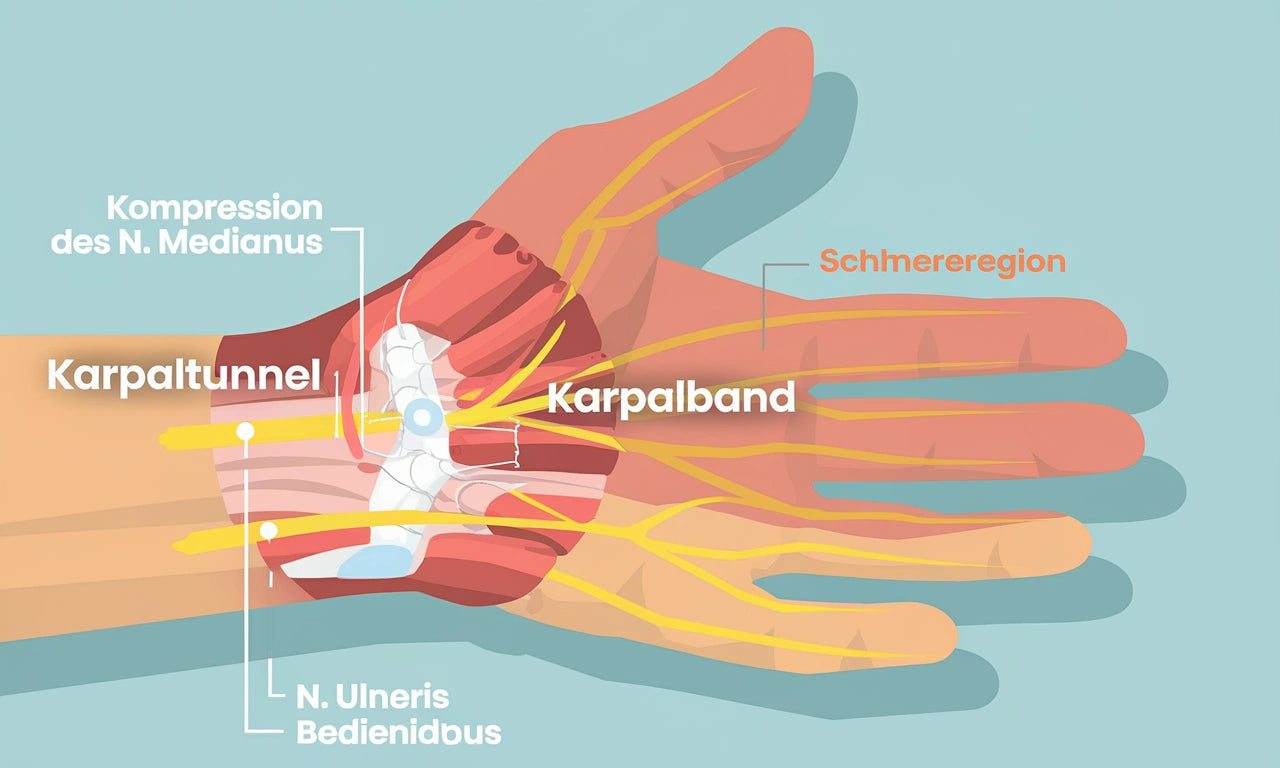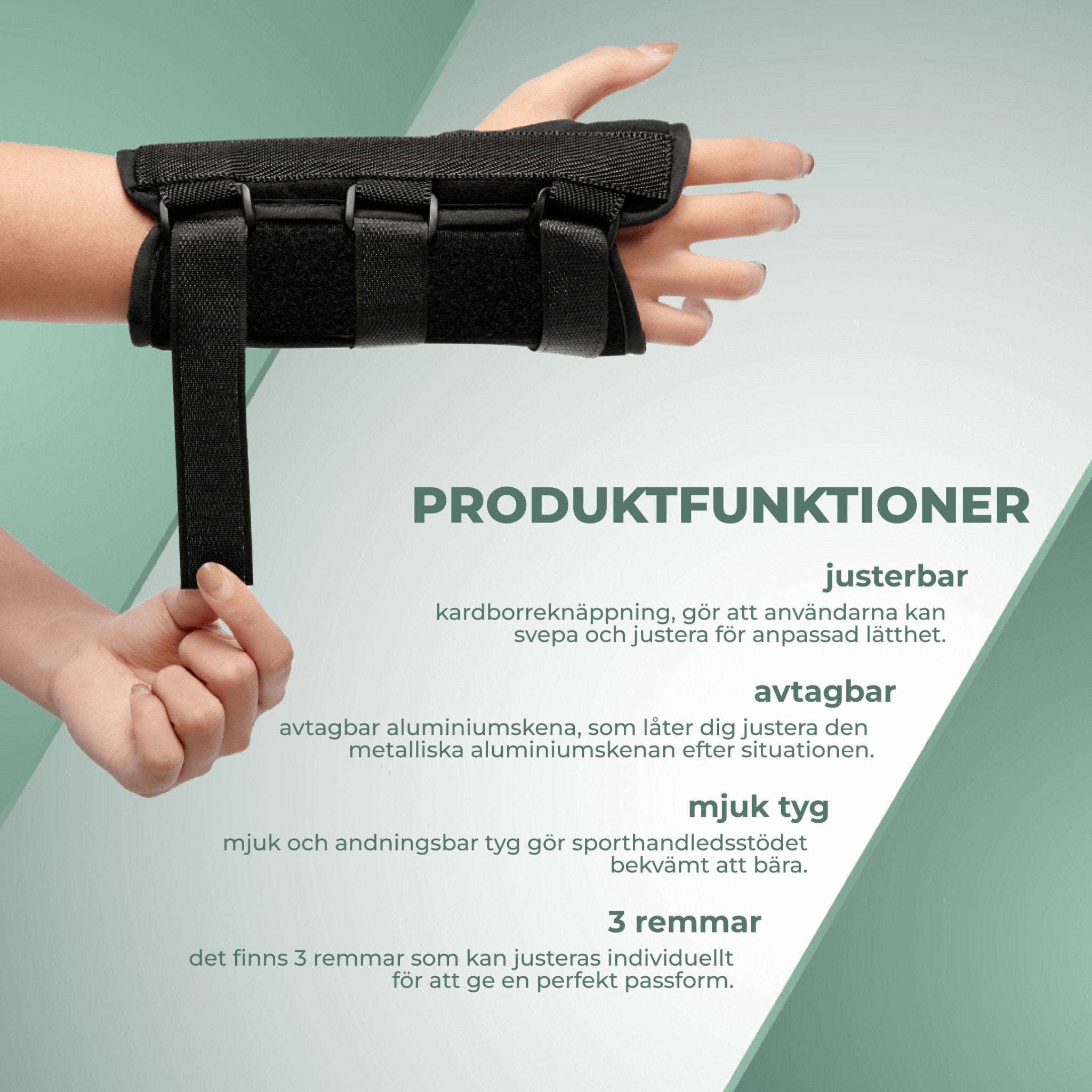Carpal Tunnel Syndrome (CTS): Symptoms, Causes, and Treatment

Carpal tunnel syndrome, also known as carpal tunnel syndrome in English, is a common condition that causes numbness, tingling, and pain in the hand and forearm. This article reviews the most common symptoms, causes, and treatment options for carpal tunnel syndrome.
What is Carpal Tunnel Syndrome?
Carpal Tunnel Syndrome is a nerve compression in the wrist where the median nerve gets compressed when it is pinched. This condition causes pain, numbness, and tingling in the hand and fingers. Symptoms often occur in the palm and then spread to the fingers. Rest, physical therapy, and sometimes surgery can relieve discomfort. Many patients experience reduced ability to perform daily tasks due to pain and discomfort.
Symptoms of Carpal Tunnel Syndrome
Carpal tunnel syndrome often develops gradually and the symptoms can vary in intensity. Common signs include:
- Numbness and tingling in the hand, primarily in the thumb, index finger, middle finger, and half of the ring finger
- Pain that may radiate up into the forearm and sometimes to the shoulder
- Weakness in the hand and difficulty grasping objects
- Clumsiness and a tendency to drop things
- Worsening symptoms at night, which can disrupt sleep
- A feeling that the hand is swollen, even if there is no visible swelling
- Pain specifically in the thumb with prolonged discomfort
- Diminished sensation in the fingertips
Causes of Carpal Tunnel Syndrome
Carpal tunnel syndrome occurs when the median nerve, which runs through the carpal tunnel in the wrist, is subjected to pressure. Several factors can contribute to this:
- Repetitive hand movements, especially at work
- Pregnant women are more frequently affected due to hormonal changes
- Genetic factors, such as a naturally narrow wrist
- Diseases such as diabetes, rheumatoid arthritis, and hypothyroidism
- wrist or hand injuries< li >Obesity < li >Prolonged use of vibrating tools
Diagnosis and Treatment of Carpal Tunnel Syndrome
To effectively treat carpal tunnel syndrome, it is important to obtain a correct diagnosis and choose the right treatment. An occupational therapist can often assist with both assessment and rehabilitation.
| Behandlingsmetod | Beskrivning | Fördelar med Handledsskydd med skena |
|---|---|---|
| Handledsskena | Stabiliserar handleden, särskilt nattetid | Ger stöd och avlastning dygnet runt |
| Fysioterapi | Övningar för att förbättra nervens rörlighet | Kompletterar användningen av handledsskydd |
| Antiinflammatoriska läkemedel | Minskar svullnad och smärta | Kan minska behovet av medicin genom naturligt stöd |
| Kortisoninjektion | Vid svåra fall med lokalbedövning | Kan förebygga behov av injektion vid tidig användning |

How Wrist Supports with Splints Can Help with Carpal Tunnel Syndrome
Wrist supports with splints offer several benefits for individuals suffering from carpal tunnel syndrome:
- Keeps the wrist in a neutral position, reducing pressure on the median nerve
- Can be used both day and night for continuous support
- Prevents extreme wrist positions during sleep
- Provides support during daily activities without completely restricting hand mobility
- Helps reduce inflammation and swelling in the carpal tunnel
Conclusion
Carpal tunnel syndrome can be a painful and limiting condition, but with early diagnosis and the right treatment, most individuals can experience significant improvements. By combining the use of wrist supports with splints, ergonomic adjustments, and in some cases medical treatment, many can effectively manage their symptoms and prevent deterioration. It is important to seek care early to avoid permanent nerve damage and to receive a personalized treatment plan.
Frequently Asked Questions (FAQ)
Can carpal tunnel syndrome go away on its own?
In the early stages, symptoms can sometimes ease with rest and the use of wrist supports, but without intervention, the condition risks worsening over time.
How long do I need to use a wrist brace?
Usage time varies, but many experience improvement after a few weeks of regular use, especially at night.
Is surgery always necessary for carpal tunnel syndrome?
No, many cases can be successfully treated with conservative methods such as wrist supports and physiotherapy. Surgery with local anesthesia is usually only considered if the symptoms are severe or do not improve with other treatments.
Can exercise worsen carpal tunnel syndrome?
Some types of repetitive exercises can worsen the symptoms, but light stretching and nerve gliding exercises recommended by an occupational therapist can be beneficial.
How do I prevent carpal tunnel syndrome?
By taking regular breaks during repetitive work, using ergonomic tools, and wearing wrist supports during risky activities, you can reduce the risk of nerve compression and thus develop carpal tunnel syndrome.
